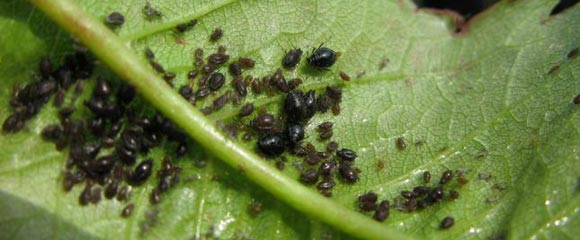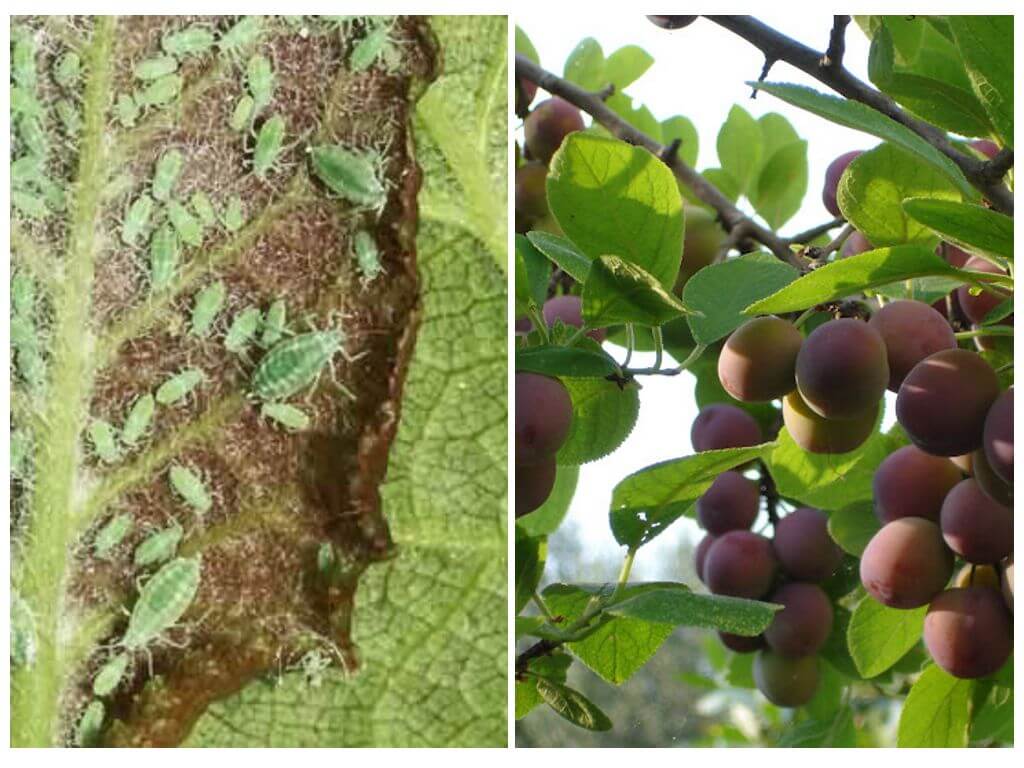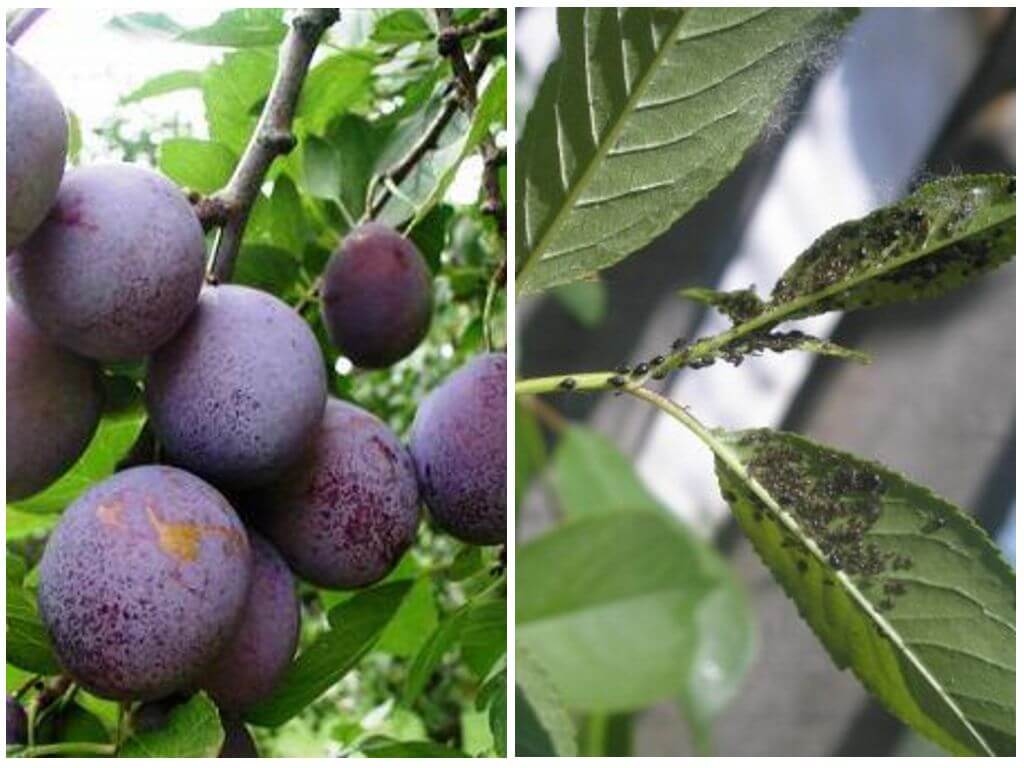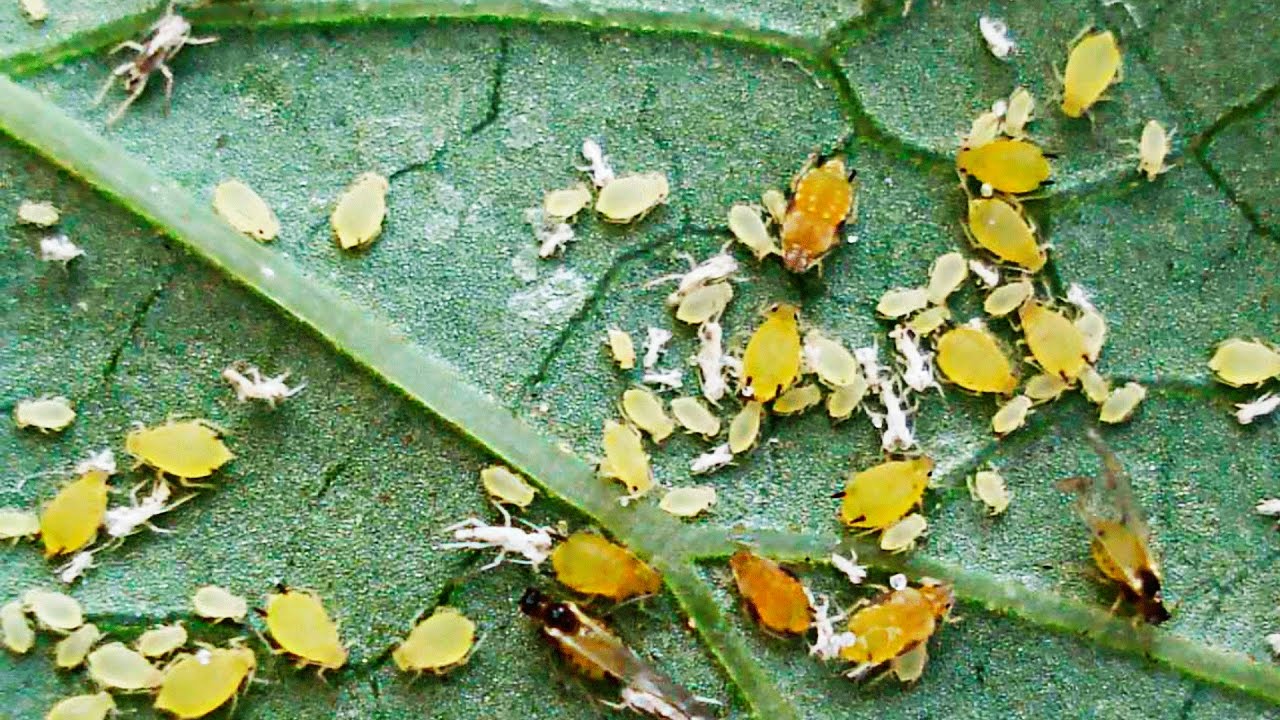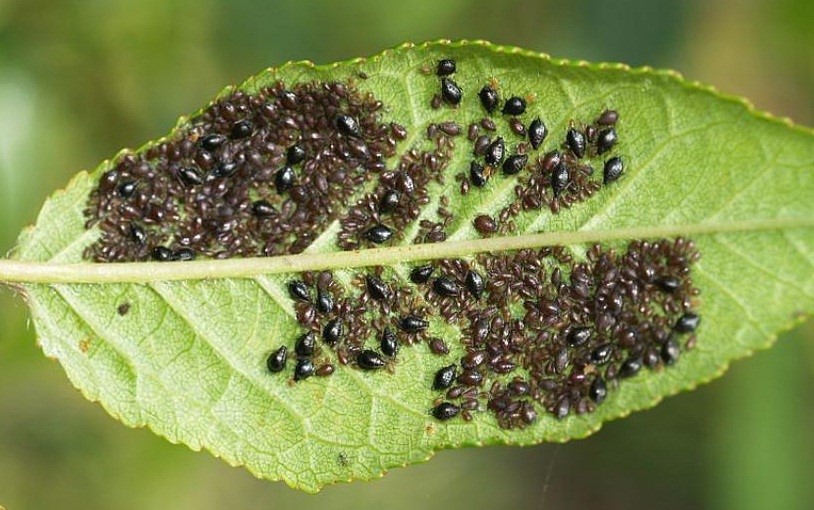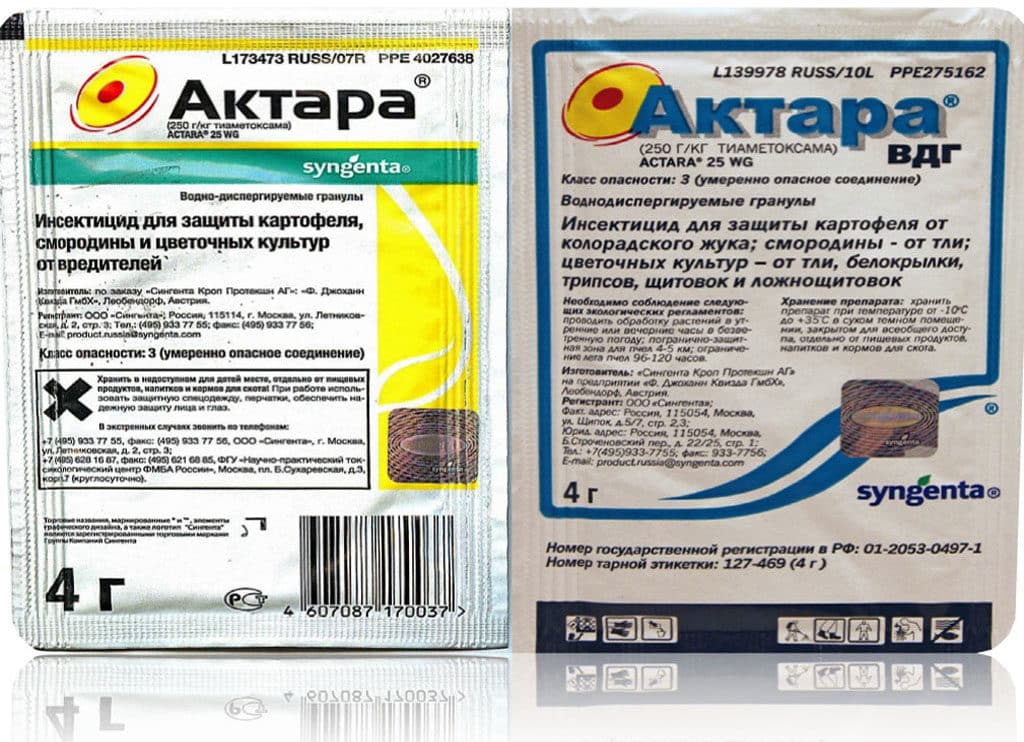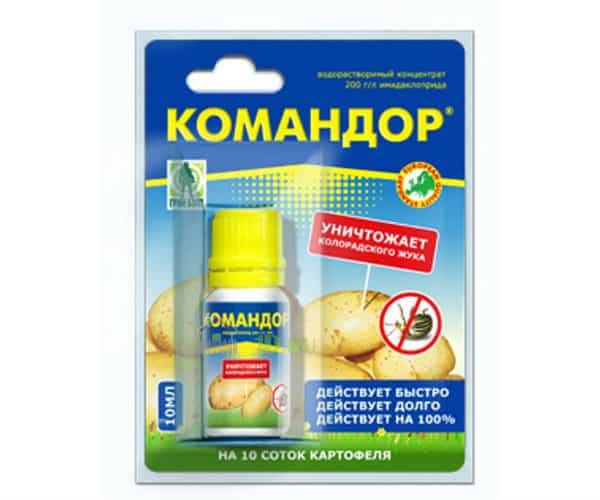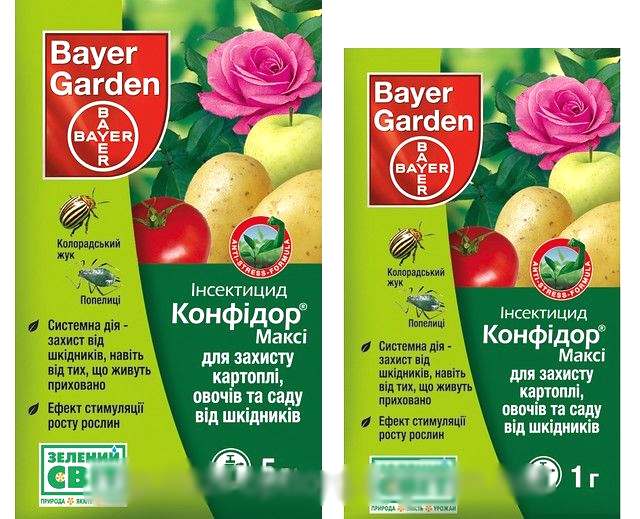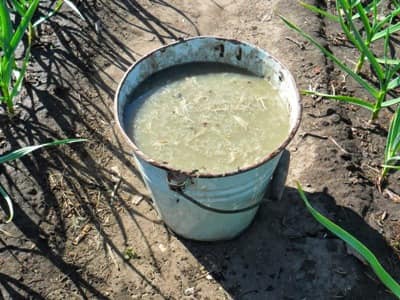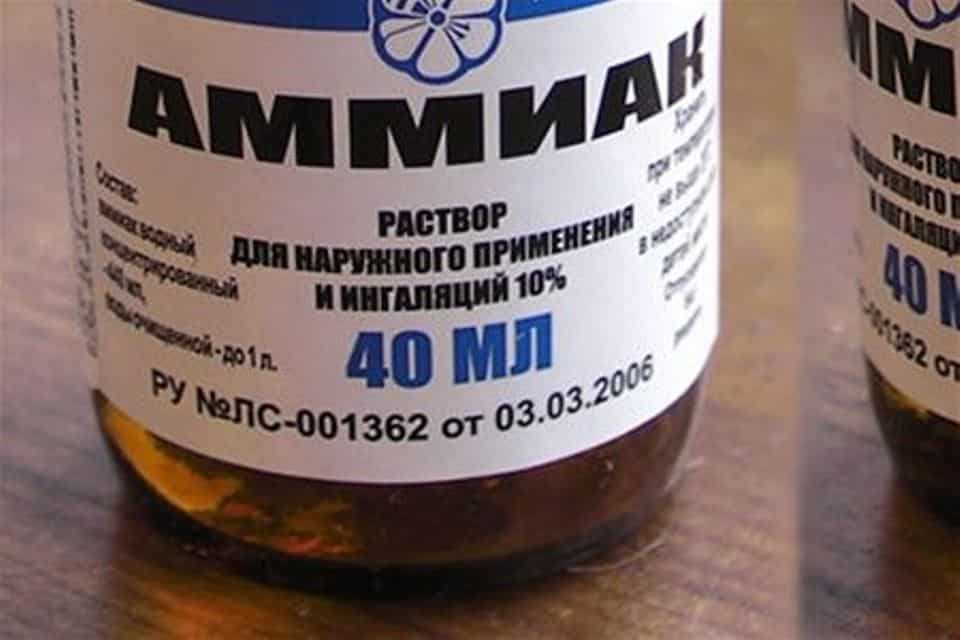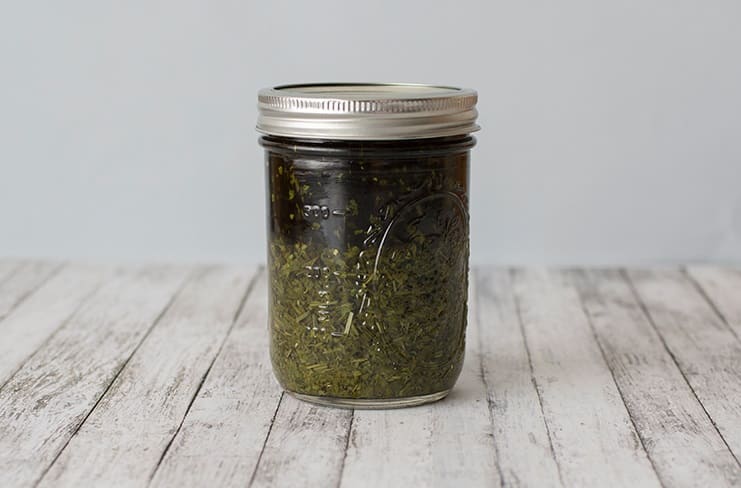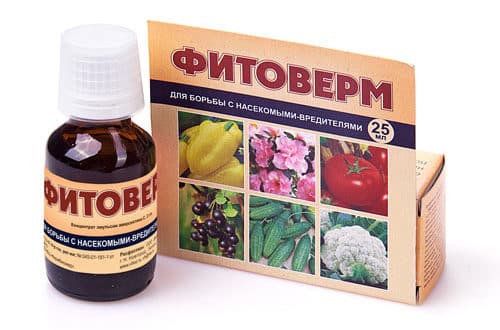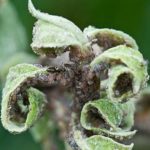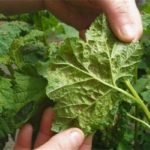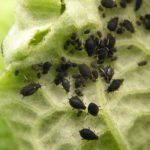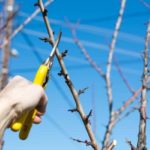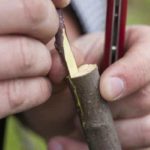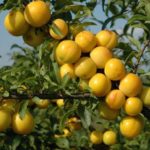Plum selection has led to the fact that it is grown in all regions, both with arid and cold climates. Tree care is simple, but pests can destroy crop plantations. You need to fight them, especially aphids on plums, regularly. Colonies of the parasite lead to a decrease in the fruiting of the plant and stop its development.
- What aphid affects plums?
- Regions of distribution of plum aphids
- Signs of defeat
- Why are pests dangerous for plums?
- Processing times
- Preparations for treatment
- Chemicals
- "Aktara"
- "Commander"
- "Spark"
- "Confidor"
- "Fufanon"
- How to get rid of it using folk remedies
- Ash-soap solution
- Birch tar
- Herbal remedies
- Ammonia solution
- Onion decoction
- Tobacco infusion
- Daily plan for controlling aphids on plums
- Rules for sanitary pruning of plums
- Processing technology
- Prevention of re-infection
What aphid affects plums?
There are many types of aphids, but stone fruits are affected by the plum variety of the pest. A white individual that parasitizes garden crops is called pollinated. Over the summer it produces several generations of insects. Aphid eggs retain their viability by hiding in bark cracks and on weeds. In the spring, they hatch into pinhead-sized insects. Their body seems to be pollinated with flour, with three dark stripes on the back.
There is another type of aphid - green, which also destroys plum trees.
It is more difficult to notice the pest on the leaves; only when there is a large concentration of individuals, their colonies are visible from the back of the leaf.
Danger is posed by another lover of stone fruit plants - black aphids. The wingless insect is carried by ants, and winged species independently “master” new trees.
Regions of distribution of plum aphids
To carry out its full life cycle, a harmful insect requires certain conditions. Plum aphids develop comfortably in regions with summer temperatures from 23 to 27 degrees Celsius. Eggs can overwinter in frosts of 10-15 degrees. Air humidity matters; aphids are active when the indicator reaches 70-80%. Such climatic conditions are common in Western European areas, and partly in Eastern European areas.
The northern regions of Africa and America, and the entire Australian continent are favorable for the life of plum aphids. It can be found on plum trees, growing in the Caucasus and Central Asia.Aphids cause the greatest harm to gardeners who grow plums in the Volga region, Krasnodar region, Ukraine, and Moldova.
Signs of defeat
You can determine the presence of aphids on a plum by:
- yellowness on the leaves along the veins;
- twisting the edges of the sheet plate;
- growths on young shoots;
- deformation of leaves, their drying out.
It is usually determined that aphids have settled on a plum tree by the ants crawling in large numbers on the young shoots of the plant. These insects carry aphids.
Colonies of the parasite are clearly visible on the underside of the leaves. They can be detected with the naked eye after the tree has finished flowering.
Why are pests dangerous for plums?
Despite the tiny size of the pest, its harm is noticeable to plum trees. To continue the genus, aphids need the juice of leaves and shoots of plums. By sucking the juices, the insect leaves its excrement on parts of the plant and secretes poison. The plum becomes infected, it loses its leaves and inflorescences. Therefore, fruits will not be able to form on the tree. With a strong spread of aphids, the leaf plates become lacy and the shoots dry out.
The secretions left on the drain interrupt the process of photosynthesis. And the sticky sugary substance attracts sooty fungus. The weakening of young shoots by the pest leads to the fact that they are not able to withstand the cold winter. The tree begins to hurt and may die if measures are not taken to combat aphids.
Processing times
It is necessary to fight aphids correctly, observing the timing of plum processing. In spring, spraying should be carried out before the buds open. You can start with folk remedies. When the green leaves hatch, you need to destroy the pest eggs that have survived over the winter. For this purpose, the tree is carefully treated with both contact-type insecticides and herbal infusions.
If the aphids are not destroyed, then spraying should be carried out at the stage of buds opening and petals falling. After flowering, it is effective to use chemicals. If a plum is infected with aphids during the growing season, the tree and fruit will have to be treated. But at least 30 days must pass before harvesting.
In the summer, fumigation with sulfur is carried out, taking up to half a matchbox of the chemical substance. Autumn treatment begins after harvesting, if during the fruiting period it was not possible to get rid of the pest. In October or November, they spray the plum trees until the air temperature drops to minus 5 degrees.
Preparations for treatment
Treatment of plums against aphids should be carried out using such agents that will be effective against the parasite. You can quickly remove insect colonies with insecticidal preparations. At the initial stages of infection, folk remedies are also effective. But you need to spray the diseased tree with them several times.
Chemicals
Modern drugs act on aphids in such a way that the parasites die upon contact with the leaf surface treated with chemicals. There are insecticides whose substances penetrate inside the insect, paralyzing it. To combat aphids, it is better to choose those drugs whose effect lasts for a long time.
The main task of insecticides is to destroy the parasitic insect so that it cannot attack the plum again.
"Aktara"
A new generation drug with contact-intestinal action is available in the form of tablets, powder, and suspension. It dissolves well in water and is used to treat the crowns of fruit trees against aphids. The main substance, thiamethoxam, is absorbed into the leaves after treatment. You can also spray the soil around the plum, then the poison will penetrate through the roots into other parts of the plant.In this case, the effect of the drug lasts up to 2 months.
After treatment with Aktara, colonies of pests begin to die within 30 minutes. The solution is prepared immediately before the start of treatment. Do not forget that the chemical is dangerous for bees and wasps.
"Commander"
The insecticide belongs to the chloronicotinyl group and is effective against many pests, including aphids on plums. After spraying a plum tree, the toxic substance of the product is absorbed by parts of the plant. Aphids, feeding on plant juices, also absorb poison, which paralyzes the nervous system of individuals, and after a while they die. Spray the plums with an insecticidal preparation at the rate of 2 milliliters of “Commander” per 5 liters of water. The plant will be completely cleared of aphids in 30 days.
"Spark"
One of the best preparations for aphids can also be used during the fruiting period. It is active against other sucking parasites. The product is non-toxic for humans and animals. It quickly acts on pest colonies, destroying them. Up to 2-5 liters of working solution is enough for one tree.
"Confidor"
The drug is based on the toxic substance imidacloprid, a derivative of nicotine. When an aphid enters the body, it blocks the vital centers of the insect, and then dies. Confidor granules quickly dissolve in water at room temperature. Spray plums with a working solution in the morning or evening, during periods of low bee activity.
1 milliliter of product is enough to treat 100 square meters of garden. It is necessary to spray the solution while wearing gloves and safety glasses. It is dangerous for both bees and fish. It has moderate toxicity for humans.
"Fufanon"
Organophosphorus insecticide is widely used to treat plum plants against aphids. After spraying, the product protects the plantings from pests for 2 weeks. A toxic substance, penetrating inside insects, leads to paralysis of the nervous system and digestive organs. The emulsion should be sprayed evenly until the infected leaves are completely wetted. Treatment should take place no later than 3 weeks before harvesting the plums.
How to get rid of it using folk remedies
Although chemicals are very effective in controlling aphids, they have many side effects. They can quickly remove aphids, but they are dangerous for bees and fish and can cause human poisoning if safety rules are not followed during spraying. You can save plums from aphids with infusions of herbs that the pest cannot tolerate, or with solutions of safe substances.
Ash-soap solution
Wood ash and laundry soap together are a toxin for aphid colonies. You can prepare a solution from 400 grams of sifted ash and 5 liters of water. Be sure to put the mixture on the fire and bring to a boil. After boiling for half an hour, remove from heat and cool. The strained solution is poured into a bucket and 5 liters of water are added.
For better adhesion of the product to the leaves, dilute 50 grams of laundry soap shavings in it.
Birch tar
Tar has a specific odor that can repel aphids. For the purpose of prevention and treatment, it is necessary to dilute 10 milliliters of tar in a bucket of warm water. You can also add laundry soap.
You can use the solution when the pest has just begun to infest the tree. Water the tree trunk circle with the solution, and the insects leave the plant. To repel parasites, containers with birch tar are hung on the branches.
Herbal remedies
Of the herbal infusions that can remove aphids, it is useful to use:
- aerial part of chamomile, 1 kilogram of raw material per 10 liters of water with infusion for 12 hours;
- tomato tops, placing 4 kilograms of raw materials in a bucket of water and boiling for 30 minutes;
- buttercup or yarrow with infusion of 1 kilogram of herb in 10 liters of water;
- capsicum, 100 grams of which are boiled in 1 liter of water over low heat for an hour and left for 2 days.
Before processing, it is necessary to dilute the solutions with water in a 1:1 ratio so as not to burn the plants.
Ammonia solution
The pungent smell of ammonia causes ants, as carriers of aphids and diseases, to go elsewhere. By spraying plums with an ammonia solution, aphids can be completely destroyed.
The solution must be prepared from 10 liters of water, pouring a tablespoon of concentrated ammonia and soap emulsion into it. Young shoots and the top of the plum are treated with a spray bottle.
Onion decoction
An infusion of onion peels is effective not only against aphids, but also against spider mites. 20 grams of husk are poured into a liter of water. After infusion and straining, spray the plum three times with an interval of 10 days.
Tobacco infusion
When harmful insects appear on the leaves of the plum tree, a tobacco decoction is prepared. Take 1 kilogram of tobacco dust or shag waste and fill it with 5 liters of water. You need to leave for a day, then boil for 1 hour. The strained solution is used by diluting 0.5 liters in a bucket of water. You need to add 100 grams of soap to the mixture.
Daily plan for controlling aphids on plums
Only systematic, daily agricultural work will save the plum tree from pest invasion. You cannot get rid of aphids by spraying with chemicals or folk remedies alone. Efficiency is a complex of measures, so all procedures must be done one by one.
Rules for sanitary pruning of plums
If colonies of adult individuals are found on the leaves, it is necessary to cut out the damaged shoots. At the same time, belts are installed on the tree trunk that can block the path of ants. The tree trunk circles are shed with a solution of the Fitoverm preparation. Autumn pruning is needed in order to destroy damaged, weak and diseased shoots. It is necessary to cut out all excess growth by treating the root circle with Fitoverm.
Processing technology
Spraying plums against aphids must be done correctly:
- The best time for processing is evening or early morning when there is no wind.
- Do not spray with chemicals or folk remedies before rain, otherwise the work will be in vain.
- The sprayer with the working solution is kept at a distance of 70 centimeters from the surface of the tree crown.
- If the crop is high, then it is better to use a stepladder.
- If there is a large concentration of insects, treatment begins with chemicals, ending with plant solutions during the fruiting period. The interval between sprayings is from 7 to 10 days.
Only daily protection from sucking parasites will keep the tree healthy.
Prevention of re-infection
Measures to prevent pest attacks on plum trees are based on:
- regular sanitary tree pruning;
- fertilizing with potassium fertilizers;
- watering the plant;
- loosening the root circle.
Plum protection will be successful if you do not forget about proper care of the plant.

